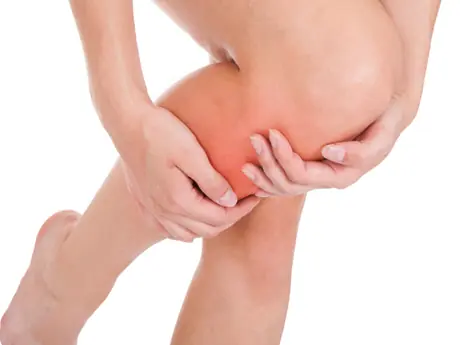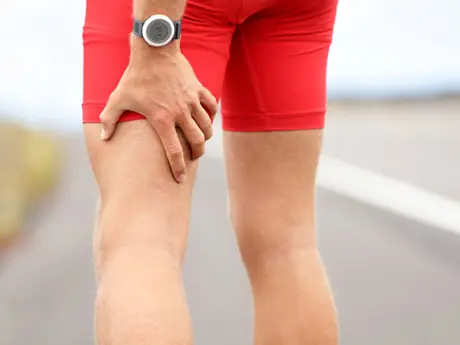RICE
RICE stands for Rest, Ice, Compression, and Elevation. When you've got muscle aches or joint pains, these four things are best for immediate treatment. These measures can relieve pain, reduce swelling, and protect damaged tissues, all of which speed healing. The only problem with RICE is that too many runners focus on the "I" while ignoring the "RCE." Ice reduces inflammation, but to ice-and-run, ice-and-run, without giving the tissues enough time to heal, is a little like dieting every day until 6 p.m. and then pigging out. Special attention should be paid to the "rest" in RICE; do not run until the injury is healed.
RICE is most effective when done immediately following an injury. If you twist your ankle or strain your hamstring, plan to take a few days off from running. Apply ice for 10 to 15 minutes at a time, several times a day. If you can, elevate the area to limit swelling. Compression can also further reduce inflammation and can provide pain relief, especially when you first return to running. An ACE bandage is the simplest way to wrap a swollen area.
Do Not Race or Do Speedwork Too Often
Researchers have found a correlation between injuries and frequent race efforts. This connection also extends to speedwork, since intervals also require a near-maximal effort. So if you train fast once or twice a week and then race on the weekend, that's a lot of hard efforts without sufficient rest, particularly if you follow this pattern week after week. Regular speed training is fine for those aiming for podium placements or age-group awards, but it is not recommended for the average runner.
Give yourself plenty of recovery time. A good general rule is to rest one day for each mile raced. So, if you race a 5K, take three days off to rest and let your body recover. If you are trying to quicken your pace for a specific goal, add a weekly or bi-weekly speedwork session to your training plan, but be wise about it.
Cross-Train
Use cross-training activities to supplement your running, improve your muscle balance, and keep you injury-free. Swimming, cycling, yoga, Pilates, elliptical training, and rowing will burn a lot of calories and improve your aerobic fitness, but be careful not to aggravate injury-prone areas. If you are injured, let pain be your guide on which activities are okay.
More: The Best Cross-Training for Runners
Wear Properly Fitted Shoes
Shoes are the most important piece of equipment that you need to run, so having a pair that fits you properly is crucial to your running success. There is no one shoe that is right for every runner and there is no shoe that is guaranteed to eliminate an injury. To find the right shoe for your feet, go to a specialty running store. The best running stores will watch you run and analyze your gait and stride to put you in the proper shoe. As a general rule, shoes should be replaced every 300 to 500 miles (depending on your size, weight, foot strike, and shoe type). Keep a training log to keep track of your shoe mileage and be sure to replace them when you hit the 300 to 500 mile mark.
Run on a Level Surface
Another factor that could have a significant impact on running injuries is road camber. No doubt you always run on the left side of the road facing traffic. That's good for safety reasons. But it also gives you a functional leg-length discrepancy, since your left foot hits the road lower on the slope than your right foot. You're also placing your left foot on a slant that tends to limit healthy pronation, and your right foot in a position that encourages overpronation. And you're doing this mile after mile, day after day, week after week, which could lead to hip injuries.
If you can, try to do some of your training runs on a level surface like a bike path or dirt trail. A local track also provides a firm, essentially flat surface that's great for slow-paced running. Also consider the treadmill – it's the perfect surface for balanced running. At the very least, a treadmill provides a great surface for beginning runners, runners who are recovering from an injury, and perhaps even marathoners aiming to increase mileage without increasing their injury risk.
More: 6 Tips to Tackle Any Terrain
 Stay healthy and run strong. Sign up for your next race.
Stay healthy and run strong. Sign up for your next race. - 2
- of
- 2
About the Author

Get ACTIVE on the Go


Couch to 5K®
The best way to get new runners off the couch and across the finish line of their first 5K.
Available for iOS | Android







Discuss This Article